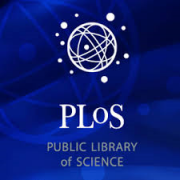Posted on August 31, 2016
Source: PLoS One

The Effect of a Multi-Level Intervention on the Initiation of Antiretroviral Therapy (ART) among HIV-Infected Men Who Inject Drugs and Were Diagnosed Late in Thai Nguyen, Vietnam
Carla E. Zelaya, Nguyen Le Minh, Bryan Lau, Carl A. Latkin, Tran Viet Ha, Vu Minh Quan, Thi Tran Mo, Teerada Sripaipan, Wendy W. Davis, David D. Celentano, Constantine Frangakis, Vivian F. Go
Background
In Vietnam, an estimated 256,000 people are living with HIV, and 58% of HIV-infections reported are among people who inject drugs (PWID). While antiretroviral therapy (ART) is widely available in Vietnam, marginalized hard-to-reach male PWID, demonstrate significantly reduced and delayed access to ART.
Methods
We investigated the effect of a randomized four-arm multi-level intervention trial on ART initiation among male PWID. Our analysis was conducted among a subset of trial participants (n = 136), who were newly diagnosed as HIV-infected, treatment naïve, and eligible for ART (baseline late diagnosis). The trial arms included: 1, standard of care (HIV testing and counseling); 2, structural-level intervention (door-to-door communications and community video screenings); 3, individual-level intervention (counseling plus group support); and 4, individual-level plus structural-level intervention. In a time-to-event analysis, we used a non-parametric approach for competing risks to estimate cumulative incidence function (CIF) for ART initiation (event of interest) by arm and the difference in CIF for each trial arm as compared to Arm 1. Follow-up was conducted at 6, 12, 18 and 24 months. Data collection occurred from 2009 to 2013.
Findings
By 24-months, 61.0% initiated ART, and 30.9% had died prior to ART initiation. In the first 6 months, participants in arm 4 (individual plus community intervention) had a 28% (95% confidence interval (CI): 6–50%) increased probability of initiating ART. Despite increasing coverage of ART in all arms throughout follow-up, participants in arm 4 retained a 31% (95% CI: 5–56%) increased probability of initiating ART. The individual and community components of the intervention were only effective when delivered together.
Conclusions
Marginalized, hard-to-reach men, who do not routinely engage in HIV services, and therefore come into care late, may benefit significantly from both individual counseling and group support, in combination with community-focused stigma reduction, when being referred and attempting to initiate urgently needed ART.